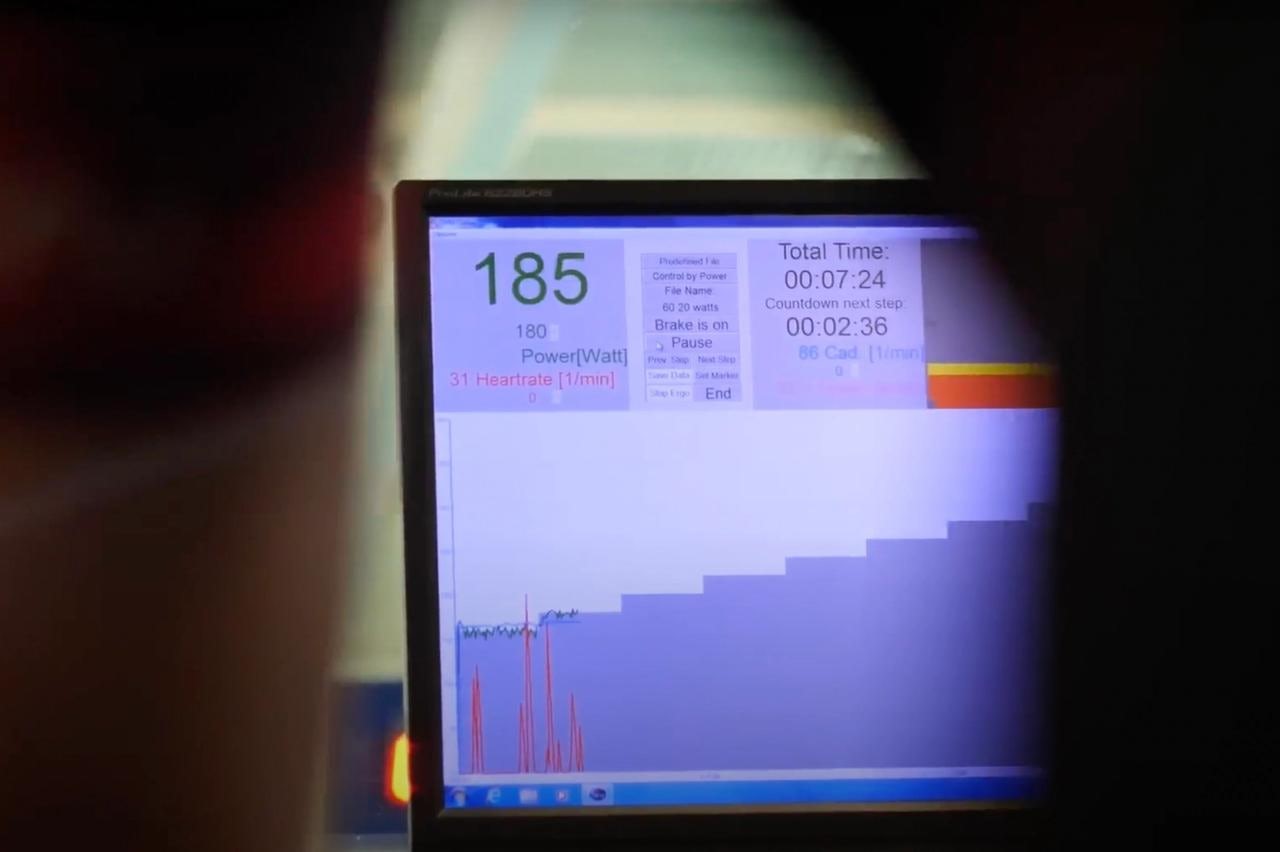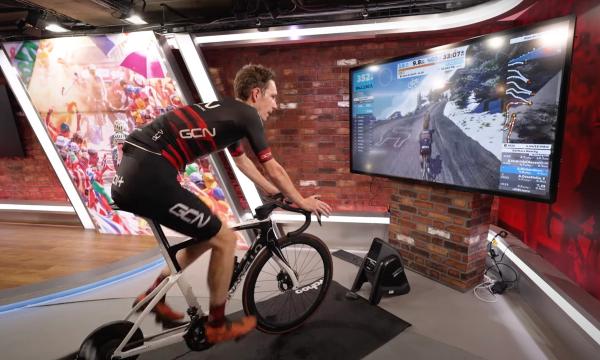Getting the most out of your smart trainer with training zones
Using a smart trainer can open you up to training with power but what do all of the zones really mean?
Alex Hunt
Junior Tech Writer
© GCN
Understanding training zones will allow you to maximise your time on the bike to boost your performance
If you have spent any time looking into cycling training, it won’t have taken you long to stumble across references to training zones. These are the essential foundations of constructive training and lay out the different intensities to train at. Each zone has its own benefits to performance, but accurately knowing where each zone lays for you as an individual is important so that you can set your zones correctly.
With so much hanging on training zones you would think that there is an agreed format for them, however like a lot of things, it isn’t quite that simple. With lots of training models out there, the exact number of zones can vary from three to seven with almost everything in between. Each of these models has its own set of pros and cons, however the most widely adopted is the seven-zone model.
The seven-zone model was created by Dr. Andy Cogan who also co-authored the book ‘Training and racing with a power meter’ which is now into its third edition. The Cogan power zone model uses an accurate functional threshold power (FTP) test result to calculate the seven zones.
Here's how the model works.
Should you avoid using heart rate?
Heart rate is a difficult metric to train to so you shouldn't rely on it too closely. Although considerably better than not using any training metrics at all, heart rate is subject to external factors that can skew results. Stress, fatigue, caffeine intake, and hydration levels can all affect your heart rate. This means that two identical rides at the same power could have a different heart rate.

© GCN
Using heart rate is subject to more external variables than power but can be great to monitor your bodies response to training
As you will see below, heart rate is also not that useful as a metric when it comes to shorter efforts above zone five. This is because heart rate lags behind effort, so although you might have been riding flat out for two minutes your heart rate might only have just started to catch up.
Heart rate can be a really useful tool when used in partnership with power. The fact that your heart rate varies depending on external factors and power remains fixed means that using the two together can give you an insight into how your body is actually handling the training. For example, if you start a ride and your heart rate is 20 beats per minute higher than you would expect, you know it is probably a good idea to take it easy.
That’s why power is usually the best metric. It offers more accuracy for training and establishing training zones and, as smart trainers have power meter functionality built in, is really easy to incorporate into indoor training. To use power, you’ll need to know your functional threshold power. This is the maximum amount of power you can sustain for an all-out one-hour effort. Most training platforms have multiple FTP tests to help you find this number and once you have, you can establish the below training zones.
What are the different zones?
Once you have completed an FTP test you can then either use an online calculator or work out the zones as a percentage of your FTP result.
- Zone 1: Recovery - <55% FTP / <68% threshold heart rate
- Zone 2: Endurance - 56-75% FTP / 69-83% threshold heart rate
- Zone 3: Tempo - 76-90% FTP / 84-94% threshold heart rate
- Zone 4: Threshold - 91-105% FTP / 95-105% threshold heart rate
- Zone 5: VO2 Max - 106-120% FTP / >106% threshold heart rate
- Zone 6: Anaerobic capacity - >121% FTP / N/A*
- Zone 7: Neuromuscular power - Maximal effort / N/A*
*Above Zone 5 heart rate cannot respond quickly enough for the duration of the efforts to get an accurate reading.
Each Zone explained
Here is a run-through of each of the zones and how they should feel and how they can be used.
Zone 1 - Recovery
The more accurate name for this zone is active recovery. Riding at under 55% of your FTP should feel incredibly easy. The use of this zone is to increase blood flow to your muscles and aid recovery.
Rides in zone 1 should be short in duration and not exceed an hour - a leisurely spin on a short flat course in Watopia would be ideal. In a zone one ride you are looking to keep your cadence high so as not to add any stress to the muscles.
Zone 2 - Endurance
As the name suggests this is the zone that endurance cyclists should be looking to spend most of their time in. Riding in zone two allows for large volumes of riding that will increase blood volume and riding economy.
Training in zone 2 will not cause muscular damage and can therefore be completed on back-to-back days without too much worry about cumulative fatigue. A trained rider could be looking at riding from two hours up to six or seven hours in zone two with the main limiting factors being fuelling and mental capacity.
Zone 3 - Tempo
This zone is when things can start to feel more intense. It is still below your FTP, however it is going to take more concentration to ride in this zone for extended periods.
Tempo training can be a good addition to a long zone two ride to give it a bit more intensity. Typically between 30 minutes to around an hour is a solid volume of this zone, with back-to-back training days at this intensity possible if fuelling and recovery are adequate.
The upper end of tempo falls into what is affectionately known as ‘sweet spot’. This is because it hits a balance of training close to your FTP without such high levels of cumulative fatigue. Sweet spot training is often referred to as the best bang for your buck in regards to raising your functional threshold power.
Zone 4 - Threshold
Threshold as you might have pieced together is riding around your FTP. Training at this intensity is difficult and can be hard to complete out on the roads as you need consistent and uninterrupted terrain. Ideally a climb or if you do not live near 20-40 minute climbs, using an indoor trainer is the best way of training this zone.
For all but the most seasoned of cyclists, riding for between 10-30 minutes at this intensity in one go will be enough. Riding in this zone will require high levels of concentration and towards the end of an interval the ‘burn’ in your legs is going to build.
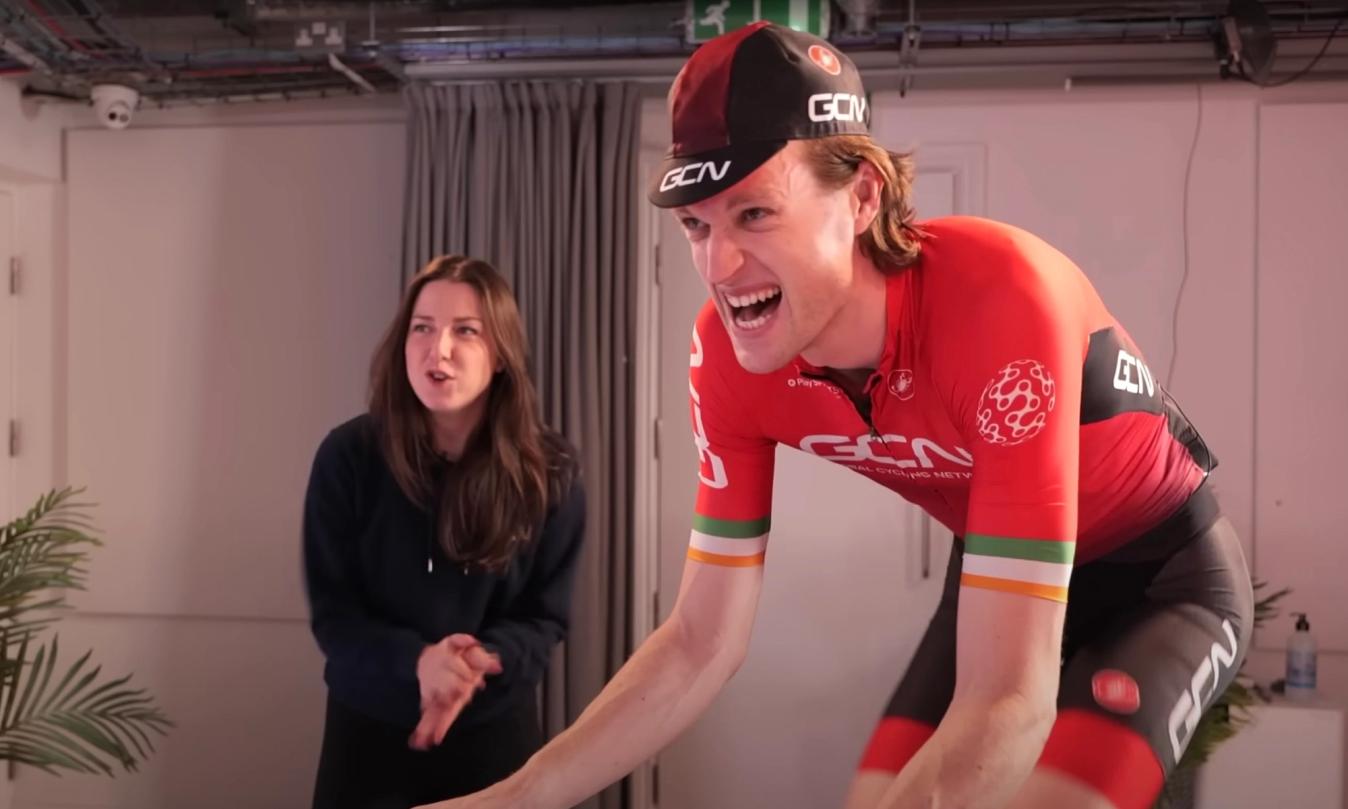
© GCN
Riding at this intensity takes concentration as well as fresh legs to get the most out of it
Training in the threshold zone is a good way to train the body to cope with riding at your sustained limit. It will also allow your body to develop its efficiency at clearing lactate as it is produced.
Zone 5 - VO2 Max
Heading into the short sharp intervals above threshold, the next zone is VO2 max. This zone will develop how effectively your body can use the oxygen you consume. With this intensity, you are dancing around the limit of how much oxygen your lungs and cardiovascular system can supply to your muscles.
Intervals in this zone range from three to eight minutes, with these efforts starting off feeling manageable and quickly turning painful. These types of sessions are difficult on the body with both muscular and cardiovascular recovery required, making back-to-back rides in this zone a bad idea.
Zone 6 - Anaerobic capacity
This is a zone for the puncheurs and is close to a full-gas effort. Riding in this zone is hard work with intervals of between one and three minutes all that can be managed, as you are consuming more oxygen than your body can produce.
Those shorts efforts can have big benefits, developing your anaerobic ceiling as well as how quickly you can recover from efforts above threshold. Finding a good place to fit in a zone 6 workout can be difficult but using an indoor trainer workout can be easier than riding outdoors as all you'll have to concentrate on is riding.
Zone 7 - Neuromuscular power
This zone is essentially a full gas, flat-out effort. Efforts in this zone tend to be under 15 seconds in duration and it puts most of the stress on the muscular-skeletal system rather than the metabolic system associated with endurance cycling.
Don't expect this zone to be comfortable! It requires a lot of recovery as it will break down muscle fibre similar to that of a gym workout. Power can only be used as a rough comparison between efforts rather than as a pacing guide. This is in part due to the duration of the interval, but also the effort is maximal and does not require pacing.
How can training zones be used on a smart trainer?
One of the massive benefits that smart trainers have for someone looking to train seriously is the consistency that they offer. If you live somewhere with a mild climate all year round with long alpine climbs along with steady flat roads, the advantages of indoor training may not be all that great. For everyone else who doesn’t live in this paradise, using a smart trainer for specific sessions can be beneficial, providing a controlled environment where you can easily meet the required power targets without having to worry about anything else around you.
What is ERG mode?
Smart indoor trainers have ERG functionality which allows them to hold you at a fixed power regardless of gear and cadence. This means that, so long as you keep the pedals turning, you will be riding at the target power of a workout.
ERG mode can provide you with a simulated environment that is perfect for each type of training you want to complete. With some training platforms such as Zwift, you can build custom workouts that can then be ridden using ERG mode.
For long efforts where holding a specific power is important, for example, a 30-minute sweet spot effort, it is important not to drift too low into zone three or too high and touch into zone 4. Out on the road, this can be incredibly difficult to do, even if you do find a location that allows for 30 minutes of undisrupted riding with no descending. Using a smart trainer with ERG mode can allow pinpoint accurate riding in the intended zone.
Testing
One of the great advantages of using a smart trainer for testing is that it is a completely controlled environment. This means that there is no traffic to contend with or a sneaky downhill section halfway through a 20-minute effort. In theory, this should give you a more consistent and reliable testing protocol to measure yourself with.
- Read more: Should we all be doing ramp FTP tests?
Not only can a smart trainer provide you with a far more controlled testing environment, but it also allows you to complete some testing that is not possible out on the road. Ramps tests have been growing in popularity since the dawn of smart trainers as they allow for more regular testing in a less physically taxing and more time-compact way.
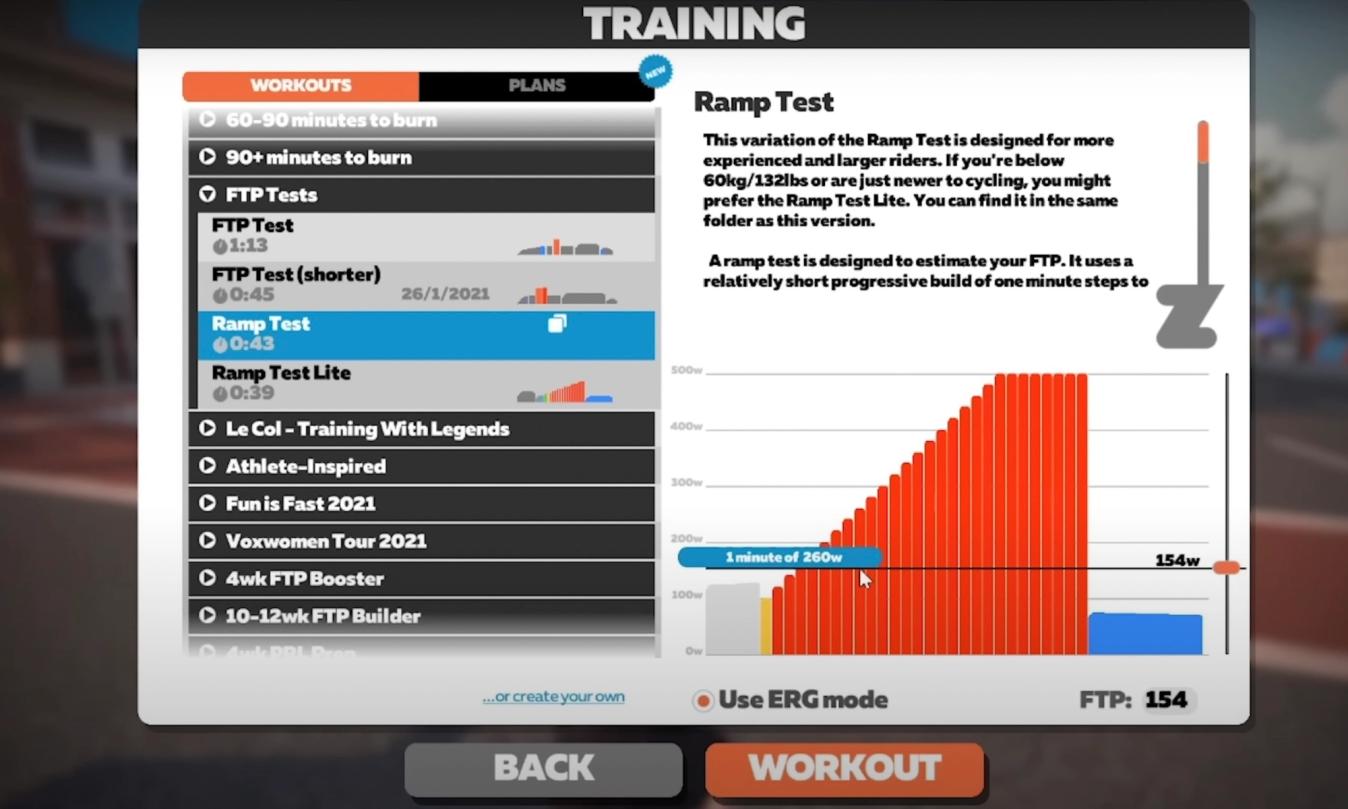
© GCN/ Zwift
Ramp tests are only achievable with the use of a smart trainer that can hold you at a fixed power
Ramp testing is the process of riding at a fixed intensity for one minute before the power ramps up by 20 watts. This is continued until the rider reaches total failure, from this maximally achieved result you can then derive an FTP value. Most virtual training platforms will offer some form of ramp test and they can be used as good intermediate tests between full-on 20-minute tests
Can training with power help with virtual racing?
The short answer is it certainly can. Firstly, if you can accurately test and calculate your FTP it will allow you to select the right racing category for your ability. If you don’t know your FTP or just guess it, you can either end up in a group too easy or too hard for you.
Once you are in the correct category for your ability, knowing your zones is great for pacing your efforts. Although the idea is to always stay with the lead group, things often don’t pan out that way. Knowing what power you can ride at for 10 minutes will allow you to pace those late attack towards the end of the race or if you are dropped.
By knowing your zones you can not only race harder but race smarter, getting the most from yourself in the race.
What are the limitations to training to power with a smart trainer?
With all of this being said, indoor training with power does have some pitfalls. Firstly, maximal efforts are not fully representative of riding out on the road. Although some of the latest generation premium smart trainers have dual-axis movement to allow you to rock the bike, it's simply not possible to squeeze out every last watt like you can on the road.
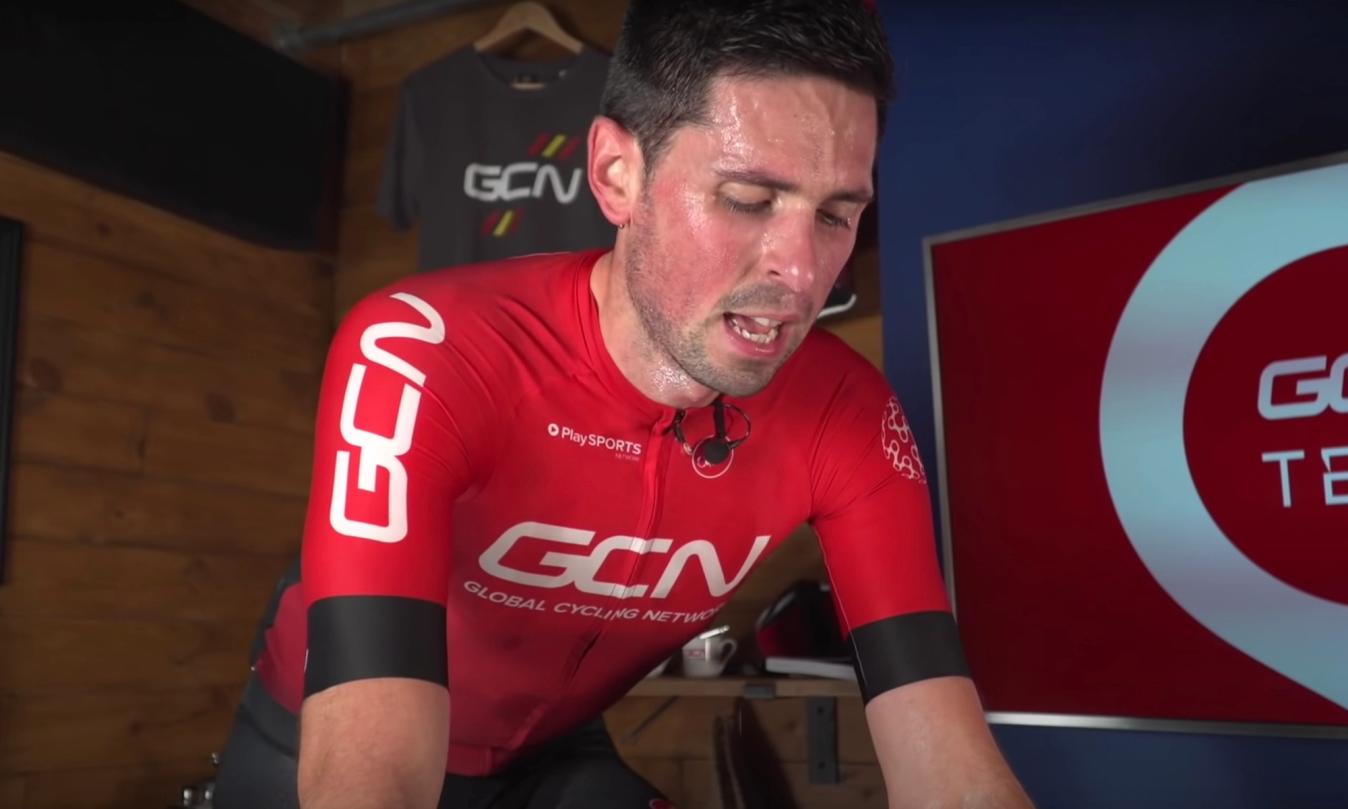
© GCN
Training indoors without appropriate cooling methods in place will have a negative impact on your performance
Another potential drawback to riding on a smart trainer is the heat and humidity build up. This will differ from rider to rider along with where your indoor training set-up is situated. Even with a great fan, sometimes riding indoors will have the temperature climbing along with the humidity. Both of these factors harm your performance and can mean that the power you can sustain outside differs somewhat from what is achievable inside.
The final issue with training inside, especially for the longer duration zone two rides, is the mental aspect of riding indoors for long periods. This seems to affect some people more so than others but it can be incredibly difficult to build up the mental resilience to complete a multi-hour ride in your living room. Using a virtual training platform like Wahoo SYSTM or Zwift can help but it still cannot replace being outside on the open road.
Need more indoor cycling help or inspiration? GCN's ultimate guide to indoor cycling has you covered with advice and guides on everything from turbo training tech to workouts. Check it out here.
